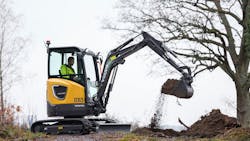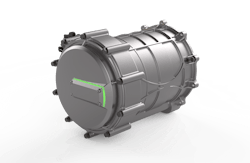Future Engine Emissions Regulations and Their Possible Impacts on Fluid Power Manufacturers
On August 25, the California Air Resources Board (CARB) — an agency which oversees air pollution control efforts in California which often influence those in the rest of the U.S. — announced the approval of the Advanced Clean Cars II rule which will accelerate zero-emission vehicle (ZEV) sales by 2035. The new rule sets up a roadmap for 100% of new car and light truck sales in California to be ZEVs; this includes plug-in hybrid electric vehicles (PHEV).
So how will this impact fluid power manufacturers? Well, greatly is the most likely answer. This new CARB rule and other similar types of regulations aim to increase development of alternatively powered vehicles as a means of helping reduce carbon emissions which will improve the environment and human health. And replacing internal combustion engines (ICE) with battery- or fuel cell-powered systems requires changes to many aspects of a vehicle, including hydraulic and pneumatic components.
Additionally, changes will likely be made to manufacturing operations — including the building of more facilities to meet increasing demand — bringing about the need for various fluid power and motion control systems used in the production lines.
In general, the shift to electrification and other alternative power sources will present several opportunities for the fluid power industry. There will remain a need for more traditional hydraulics and pneumatics technologies in many cases. But there will also come a need for the industry to re-evaluate component and system designs, which can benefit an industry sometimes not always thought of as the most advanced — however now could be the time to change that mentality.
The Need to Design for Electrification
Electrification in its various forms has grown exponentially in recent years, and can be seen in almost every industry from passenger vehicles to heavy-duty trucks to off-road equipment as well as in some industrial operations. As such, it is important for manufacturers, whether an OEM or a component supplier, to ensure they are developing solutions appropriately.
This was a key point made by Mike Terzo, CEO of Terzo Power Systems and member of Power & Motion’s Editorial Advisory Board, during the September 1 National Fluid Power Association (NFPA)/Fluid Power Industrial Consortium (FPIC) quarterly seminar. The event was co-sponsored by the Association of Equipment Manufacturers (AEM) and focused on electrification trends in heavy-duty off-road equipment, a key segment for the fluid power industry and one in which electric power systems are increasing.
In his presentation, Terzo noted how this industry is different from automotive as it needs a business case for moving to electric unlike passenger cars where people may be buying based on emotions or as a status symbol. Those buying a battery-electric construction machine instead need benefits such as reduced maintenance and improved efficiency, all of which will go toward lower total cost of ownership (TCO).
To help achieve these benefits, Terzo said the correct approach needs to be taken when designing an electric-powered machine. This includes a possible redesign of the hydraulics. He said there can be extensive efficiency losses if the hydraulics system is kept the same and only the power system is changed.
Terzo pointed to various methods currently being used in the off-road equipment industry to overcome these losses in electric machines such as the incorporation of electrohydraulics as well as digital pump technology. He stated use of electrohydraulics can improve efficiency of the hydraulics system by 10% and use of electrohydraulics with a digital pump can achieve a 20% gain.
Overall, he said there is optimism for fluid power in electrification if components and systems can be designed appropriately. The greater utilization of hydraulics on machines the better the use case for electrification there will be said Terzo.
Because of the impact electrification will have on the fluid power industry and the sectors it serves, the NFPA has launched a new task force focused on the subject which will be chaired by Terzo. The goal is to help the industry understand what technologies and changes may occur so they can better understand the impacts to their own future designs.
READ MORE: NFPA Launches Electrification of Fluid Power Task Force
Now is the Time to Prepare
The shift away from ICE in applications where possible is not going anywhere, nor are the emissions regulations which are helping drive for the move to alternative power sources. During the September 1 FPIC seminar, Jason Malcore, Director of Global Standards and Compliance at AEM, discussed the current state of engine emissions regulations for off-road equipment.
Like the automotive sector, global emissions regulations are becoming increasingly more stringent for heavier duty vehicles and equipment. Some cities around the world are even looking at banning the use of ICE, particularly in populated city centers.
In the U.S. off-road equipment engines must comply with Tier 4 Final and in Europe Stage V which is currently the most stringent in the world. However, Malcore noted the EU may move to a Stage VI in the 2030-2032 timeframe. CARB has already started looking at a Tier 5 which could lead the rest of the U.S. — put into place by the Environmental Protection Agency (EPA) — to follow suit; the CARB regulation could be enacted as soon as 2028 and the EPA's around 2030.
China and other countries also have their own regulations which could be coming down the pipeline in the coming years as well.
All of these current and future regulations will bring about the need for alternative power sources for various types of equipment and vehicles. And with many of the timelines getting shorter and shorter, it is imperative for OEMs and their component suppliers to be proactive about developing the necessary technologies as soon as possible.
READ MORE: Bosch Rexroth Launches Range of Electrification Products for Off-Highway Equipment
Electrification isn't going anywhere, and is likely to be just the start of a move toward alternative power systems making now the time to be developing appropriate solutions to meet current and future industry requirements.
We want to hear from you!
What role is electrification playing in your company or design process? What further education is needed in the industry to aid the transition to electrification? What are the biggest challenges still ahead?
Let us know! Email me at [email protected] or reach out to us on social media.
Twitter: @TechnlgyEditor or @PowerMotionTech
LinkedIn: @PowerMotionTech
About the Author
Sara Jensen
Executive Editor, Power & Motion
Sara Jensen is executive editor of Power & Motion, directing expanded coverage into the modern fluid power space, as well as mechatronic and smart technologies. She has over 15 years of publishing experience. Prior to Power & Motion she spent 11 years with a trade publication for engineers of heavy-duty equipment, the last 3 of which were as the editor and brand lead. Over the course of her time in the B2B industry, Sara has gained an extensive knowledge of various heavy-duty equipment industries — including construction, agriculture, mining and on-road trucks —along with the systems and market trends which impact them such as fluid power and electronic motion control technologies.
You can follow Sara and Power & Motion via the following social media handles:
X (formerly Twitter): @TechnlgyEditor and @PowerMotionTech
LinkedIn: @SaraJensen and @Power&Motion
Facebook: @PowerMotionTech

Leaders relevant to this article:



